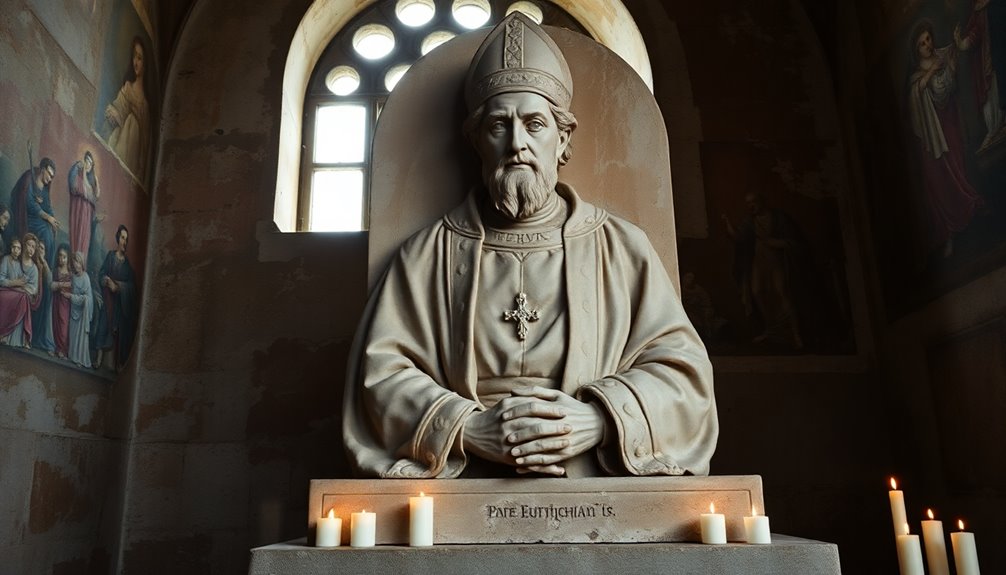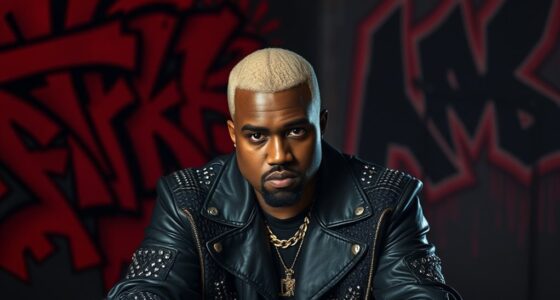Pope Eutychian, born around 240 AD in Luna, Italy, served from January 4, 275, to December 7, 283. His papacy emerged during critical shifts in Church governance. He faced the Novatianist controversy regarding lapsed Christians and worked to unify a growing Christian community amidst political turmoil. Eutychian emphasized the proper burial of martyrs, which strengthened community ties and tradition. Significantly, he was the last pope buried in the Catacombs of Callixtus. His contributions laid the groundwork for future Church discussions, influencing its stability and evolution. If you're curious about his specific challenges or impacts, there's more to discover.
Key Takeaways
- Pope Eutychian, born around 240 AD in Luna, Italy, rose to papacy after serving as a deacon.
- His papacy lasted from January 4, 275, to December 7, 283, during a time of Church internal conflicts.
- Eutychian emphasized the proper burial of martyrs, fostering community ties and reverence for faith sacrifices.
- He navigated the Novatianist controversy, working towards Church unity amidst growing Christian populations.
- Eutychian was the last pope interred in the Catacombs of Callixtus, marking a significant burial tradition shift.
Early Life and Background
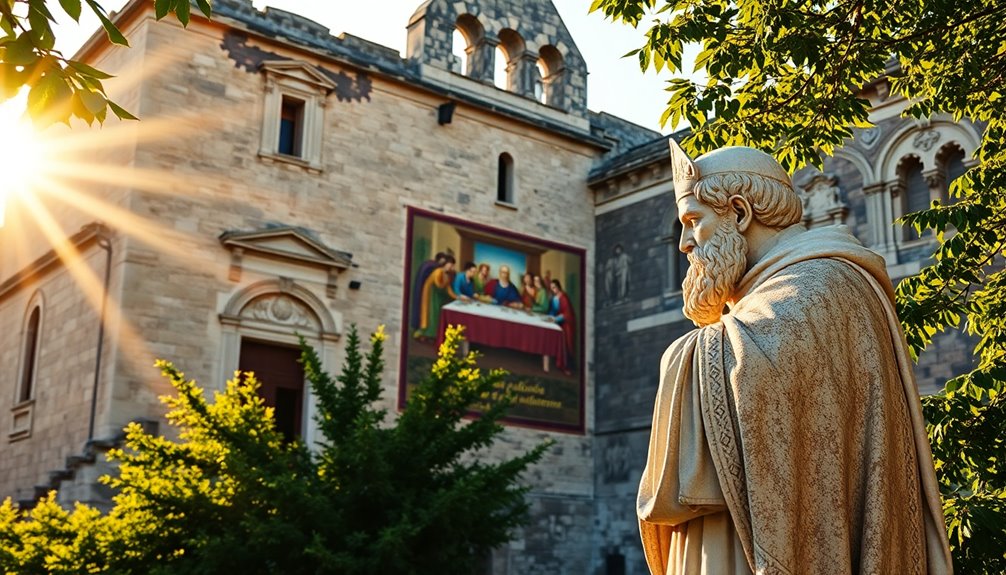
Pope Eutychian, born around 240 AD in Luna, Italy, had roots that likely trace back to a noble family, which played a significant role in his ascent within the church. His birth name, Eutychianus, hints at a background that provided him with certain privileges, possibly aiding his early involvement in church affairs. Although little is known about his formative years, you can infer that, like many early church leaders, he was likely well-versed in both the spiritual and societal needs of his community.
Raised in a region influenced by Roman culture and politics, Eutychian navigated a complex landscape marked by internal disputes and external persecutions within the church. His family's noble status could have afforded him opportunities that others might not have had, paving the way for his later role as a deacon before ascending to the papacy. During this time, he developed a deep understanding of the community needs that would influence his leadership style. Despite limited records regarding his education and personal life, the mention of his father, Marinus, suggests a familial connection that could have further supported his ecclesiastical ambitions. Consequently, Eutychian's early life set the stage for his significant contributions to the church during a tumultuous period in Roman history.
Papal Selection and Reign
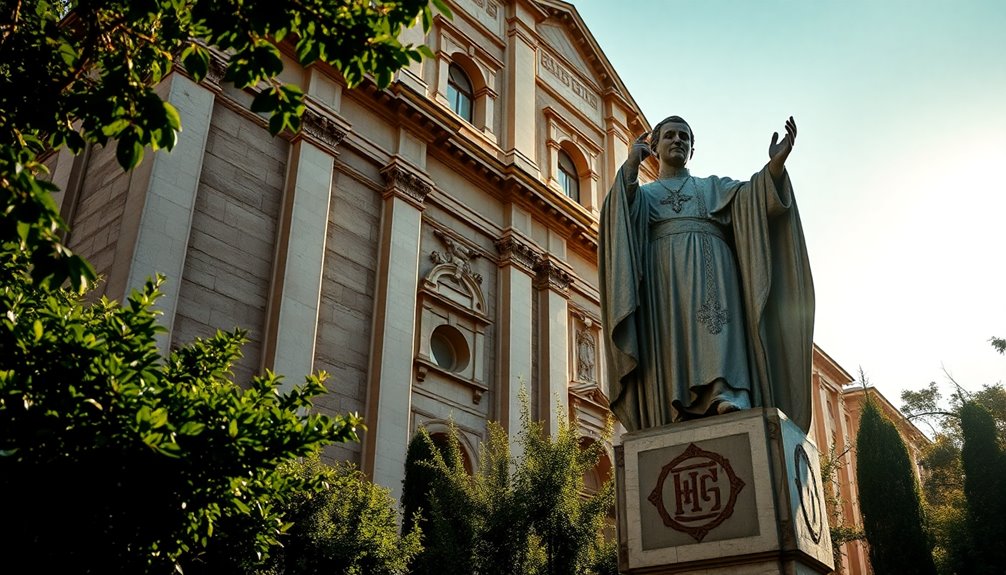
The process of electing a new pope has evolved considerably over the centuries, shaped by both ecclesiastical tradition and the political landscape of the time. Today, the College of Cardinals is the sole body responsible for this significant task, a practice established since 1059.
Here's how the election unfolds:
- Only cardinals under the age of 80 can vote, ensuring fresh perspectives in the conclave.
- The election requires a two-thirds majority vote, emphasizing the need for widespread support.
- Cardinals cast secret ballots in the Sistine Chapel, with the results revealed by black or white smoke—black for no decision, white for a new pope.
- Once elected, the new pope accepts his role, chooses a papal name, and is immediately vested before greeting the world from St. Peter's Basilica.
The papal selection process reflects not just the spiritual leadership of the Church but also the historical shifts in governance and influence, moving from secular powers to a more centralized and ecclesiastical method of election. Notably, the two-thirds supermajority required for election has been a critical feature since the 1621 reforms, ensuring that the chosen pope has broad support among the electors. Eutychian's papacy emerged from this evolving tradition, marking a pivotal moment in Church history.
Challenges of His Papacy
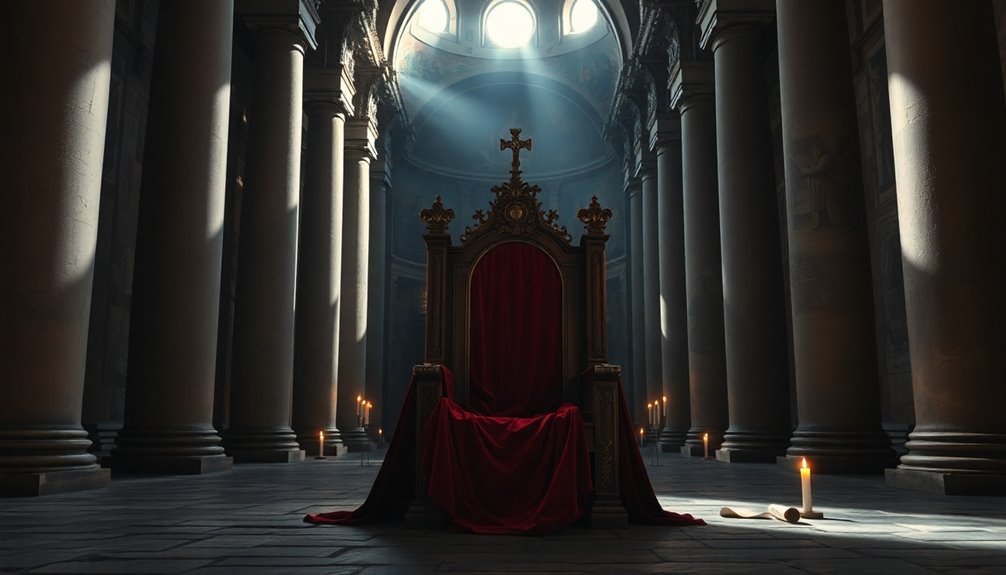
Numerous challenges marked Eutychian's papacy, as he navigated a complex landscape of internal disputes and external pressures. The Novatianist controversy loomed large, forcing you to address whether "lapsed" Christians could be welcomed back into the church. Additionally, ongoing Trinitarian and christological debates threatened the church's stability, as factions fought over the nature of the Holy Trinity. You found yourself in the midst of divisions regarding the treatment of apostates, balancing strict exclusion versus forgiveness.
Externally, while the Roman Empire experienced a relative peace with Christianity, the threat of persecution was never far behind. Internal instability, highlighted by emperor assassinations, created an environment where past persecutions still resonated. You provided guidance and moral support to your flock during these turbulent times. Eutychian's leadership also played a vital role in fostering unity within the church and addressing the growing concerns of the faithful.
Another pressing challenge involved ensuring proper burial for martyrs. You implemented decrees on their treatment, reflecting the church's reverence for those who died for their faith. As you faced these ecclesiastical and social challenges, it became essential to maintain the church's organizational structure while addressing the growing Christian population. Your efforts to bless crops and integrate faith into daily life helped reinforce community bonds amidst the turmoil.
Contributions to the Church
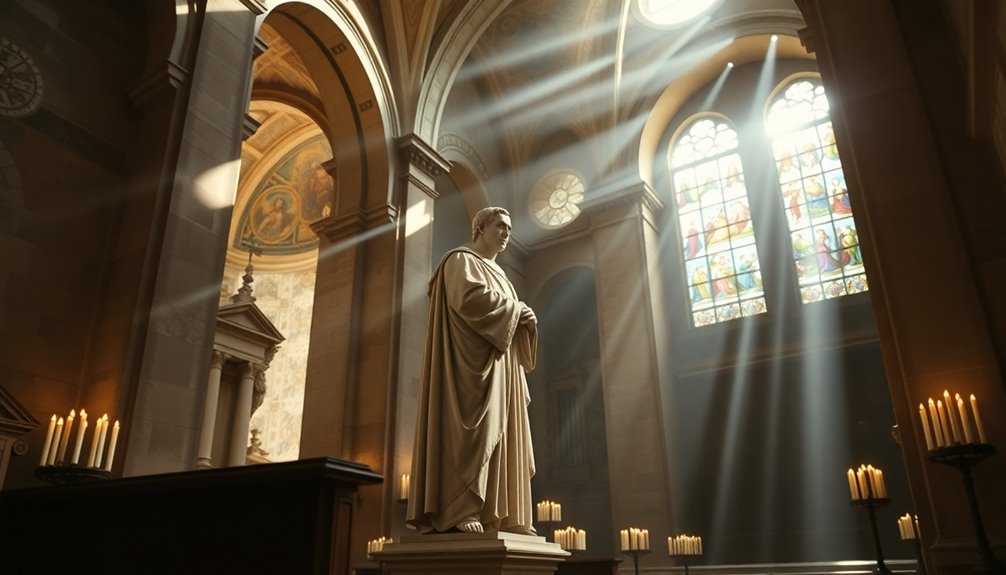
Throughout his papacy, Eutychian made significant contributions that shaped the early Church's identity and practices. His focus on pastoral care and community bonding reinforced the Church's presence in Roman society. You can see his influence through several key actions:
- He emphasized the proper burial of martyrs, ensuring sacred rites that strengthened the community's ties and sense of belonging.
- Eutychian was the final pope buried in the Catacombs of Callixtus, a tribute to his commitment to the veneration of martyrs. This fact is particularly noteworthy as he is recognized as the last pope to be interred there.
- He addressed internal disputes, particularly the Novatianist schism, working to unify the Church amidst differing views on absolution for "lapsed" Christians.
- Finally, while he may not have directly engaged in Trinitarian controversies, he laid the groundwork for future discussions by maintaining a focus on ecclesiastical stability.
Through these contributions, Eutychian helped the Church evolve into a significant cultural institution within the Roman Empire, promoting peaceful acceptance of Christianity and establishing traditions that would endure. His papacy marked a pivotal moment for the Church, fostering a community connected by shared beliefs and practices.
Legacy and Historical Records

Understanding Pope Eutychian's legacy requires delving into the historical records that document his papacy from January 4, 275, to December 7, 283. The exact duration of his reign is uncertain, with some sources claiming it lasted 8 years and 11 months while others suggest it was only 10 months. He succeeded Pope St. Felix I and was followed by Pope Caius. Significantly, Eutychian was the last pope to be buried in the Catacombs of Callixtus, marking a crucial shift in papal burials. His burial site holds importance, as it symbolizes the end of an era for such interments, and though some early accounts hint at martyrdom, most historians agree he died of natural causes. His feast day is celebrated on December 8, commemorating his role as the 27th Pope of the Catholic Church. Despite limited knowledge about his personal life, his legacy encapsulates the broader context of the early Christian Church during the Crisis of the Third Century. Historical texts like the Liber Pontificalis and Eusebius provide fragments of information, but much of Eutychian's life remains shrouded in mystery. His contributions to the church included advocating for the veneration of martyrs, which became a significant practice in the early Christian community.
Frequently Asked Questions
What Were the Major Events During Eutychian's Papacy?
During Eutychian's papacy, you'd witness internal disputes like the Novatianist controversy, engagement in trinitarian debates, and efforts to guarantee proper burial rites for martyrs, all while steering the Church through a turbulent period.
Did Eutychian Have Any Notable Predecessors or Successors?
You might think predecessors and successors don't matter, but they greatly influence a leader. Eutychian followed Pope Felix I and was succeeded by Pope Caius, both pivotal in shaping the early Church's direction.
How Did Eutychian Influence Later Popes?
Eutychian influenced later popes by establishing structured ecclesiastical hierarchies and emphasizing martyrs' burial rites. His compassionate leadership during persecution set a precedent, guiding future leaders in addressing spiritual needs and managing church affairs effectively.
Are There Any Relics Associated With Pope Eutychian?
Imagine ancient catacombs echoing with whispers of faith. You'll find fragments of Pope Eutychian's epitaph, along with relics in the papal crypt, marking his legacy and connection to early Christian burial practices in Rome.
What Theological Issues Did Eutychian Address During His Papacy?
During Eutychian's papacy, you'd see him confronting internal conflicts like the Novatianist Schism and Trinitarian debates. He'd focus on establishing church governance, defining practices, and addressing the needs of a growing Christian community.

